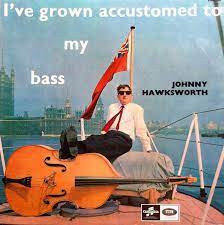
Daily Dose Of Jazz…
Johnny Hawksworth was born in London, England on February 2, 1924 and initially trained as a pianist, but also played double bass in the Ted Heath Orchestra during the early 1950s and through the 1960s. Becoming one of the most popular jazz bassists in the UK, he won numerous polls and was often featured as a soloist on Heath concerts and recordings.
As a composer Johnny wrote many television themes including Salute to Thames, Thank Your Lucky Stars, Roobarb, Man About the House and George and Mildred. He contributed some of the incidental music used in the 1967 Spider-Man cartoon, and his composition, Er Indoors, was frequently used in SpongeBob SquarePants. While working on films, he scored The Naked World of Harrison Marks, The Penthouse, and Zeta One.
Hawksworth has also written many pieces of stock music for the De Wolfe Music library. He also provided the hypnotic musical soundtrack to Geoffrey Jones’s classic British Transport Films Snow and has composed American-style blues-based material under the name Bunny J. Browne and classically-based material under the name John Steinway.
Bassist and composer Johnny Hawksworth transitioned on February 13, 2009 in Sydney, Australia at the age of 85.
More Posts: bandleader,bass,composer,history,instrumental,jazz,music
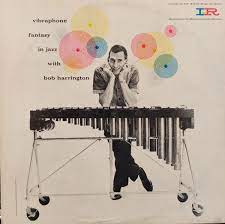
Daily Dose Of Jazz…
Bob Harrington was born Robert Maxon Harrington in Marshfield, Wisconsin on January 30, 1912. He played piano with Charlie Barnet in the early 1950s and worked with both Red Nichols and Bud Freeman during that decade as a drummer.
On vibraphone, he played with Georgie Auld, Buddy DeFranco, Vido Musso, Ben Webster, Ann Richards, and Harry Babasin’s Jazzpickers. He released one solo album, Vibraphone Fantasy in Jazz, on Imperial Records in 1957, which is now a collector’s item.
Vibraphonist Bob Harrington, who was adept on drums and piano, transitioned on August 20, 1983 in Kona, Hawaii.
More Posts: bandleader,drums,history,instrumental,jazz,music,piano,vibraphone
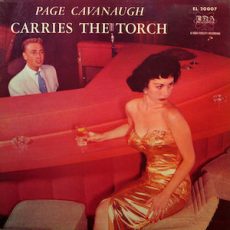
Daily Dose Of Jazz…
Page Cavanaugh was born Walter Page Cavanaugh on January 26, 1922 in Cherokee, Kansas and began on piano at age nine. By the time he turned 16 he was playing with Ernie Williamson’s band for a year before moving to Los Angeles, California and joining the Bobby Sherwood band at age 20.
While serving in the military during World War II, he met guitarist Al Viola and bassist Lloyd Pratt, and they formed a trio. After the war’s end they performed together in the style of the Nat King Cole Trio, scoring a number of hits in the late 1940s, including The Three Bears, Walkin’ My Baby Back Home, and All of Me. The trio appeared in the films A Song Is Born, Big City, Lullaby of Broadway and Romance on the High Seas. He recorded dozens of tracks with Doris Day, Frank Sinatra, Dinah Shore, June Christy, Mel Torme and other legendary singers.
During the early Fifties he had a program, Page Pages You, on the short-lived Progressive Broadcasting System, the trio played on Frank Sinatra’s radio program, Songs by Sinatra, and on The Jack Paar Show. Cavanaugh played in Los Angeles nightclubs through the 1990s, both in a trio setting and as a septet, the Page 7. He recorded with Bobby Woods & Les Deux Love Orchestra, and as a bandleader with MGM, Capitol, RCA, Star Line, Tiara, and Dobre Records over the course of his career, releasing his final trio album, Return to Elegance, in 2006.
Pianist, vocalist, and arranger Page Cavanaugh transitioned from kidney failure on December 19, 2008 in Los Angeles, California.
More Posts: arranger,bandleader,history,instrumental,jazz,music,piano,vocal
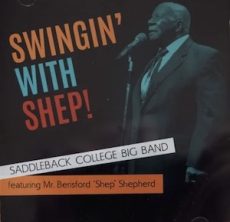
Daily Dose Of Jazz…
Shep Shepherd was born Berisford Shepherd on January 19, 1917 in Honduras while his mother was enroute from the West Indies to Philadelphia, Pennsylvania. Arriving in the city she first settled and raised him in a Jewish neighborhood before moving to a Black neighborhood.
An early fascination with marching bands he drummed on tables and chairs until his mother bought him a toy drum to save wear and tear on the furniture. He attended the Jules E. Mastbaum Area Conservatory and Vocational School where he trained as a percussionist on timpani, vibraphone, xylophone, snare and bass drums. Students were required to have a secondary instrument, and he chose the trombone.
Initially hoping for a career in the Philadelphia Orchestra, he shifted his interest to jazz. He formed a friendship with drummer Jimmy Crawford, who was able to help his career in New York City. During the Thirties performed with Jimmy Gorham’s band in Philadelphia. In 1941, Benny Carter contacted Shep and he moved to New York City, where he also worked with Artie Shaw the same year. He became heavily in demand and the phrase “Get Shep!” became a phrase among area musicians.
Four years in the Army saw him serving in the entertainment corps, and working there he played trombone and improved his skills as a composer and arranger. He met Billy Butlet and in 1952 after his discharge he began working with Butler as part of Bill Doggett’s group. In 1956, Shepherd helped write Doggett’s signature song, Honky Tonk. He left Doggett’s group in 1959 and returned to New York City where he worked in pit orchestras for Broadway shows, and as a music copyist and arranger.
When the nationwide tour of the Broadway show Here’s Love ended, Shepherd found himself in San Francisco, California and he became a freelance musician there. He continued to play drums through the Sixties and Seventies working with Patti Page, Lionel Hampton, Lena Horne, The Ward Singers, Earl Bostic, Buck Clayton, Odetta, Cab Calloway, Sy Oliver, Big Maybelle, and Erskine Hawkins. At 80 years old, he switched his primary focus from drums to trombone, and with organist Art Harris and drummer Robert Labbe formed the group Blues Fuse.
Drummer, trombonist, vocalist and composer Shep Shepherd, who is listed in The Biographical Encyclopedia of Jazz and Who’s Who Among Black Americans, transitioned on November 25, 2018 at the age of 101.
More Posts: bandleader,drums,history,instrumental,jazz,music,trombone,vocal
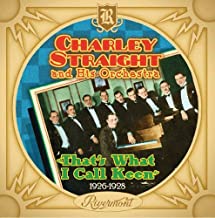
Daily Dose Of Jazz…
Charles Theodore Straight was born on January 16, 1891 in Chicago, Illinois. He started his career in 1909 at 18 accompanying singer Gene Greene in Vaudeville. In 1916, he began working at the Imperial Piano Roll Company in Chicago, where he recorded dozens of piano rolls.
Becoming a popular bandleader around town during the Jazz Age, his band, the Charley Straight Orchestra, had a long term engagement at the Rendezvous Café from 1922 to 1925 and recorded for Paramount Records and Brunswick Records during the decade.
This period also saw Straight working with Roy Bargy on the latter’s eight Piano Syncopations. Besides working as a pianist or leading an orchestra, he also composed and arranged music, both ragtime and jazz.
Pianist, bandleader and composer Charley Straight transitioned on September 22, 1940 in Chicago after being struck by an automobile while working as a city sanitary inspector. He was emerging from a manhole in the street.
More Posts: arrangr,bandleader,composer,history,instrumental,jazz,music,piano



